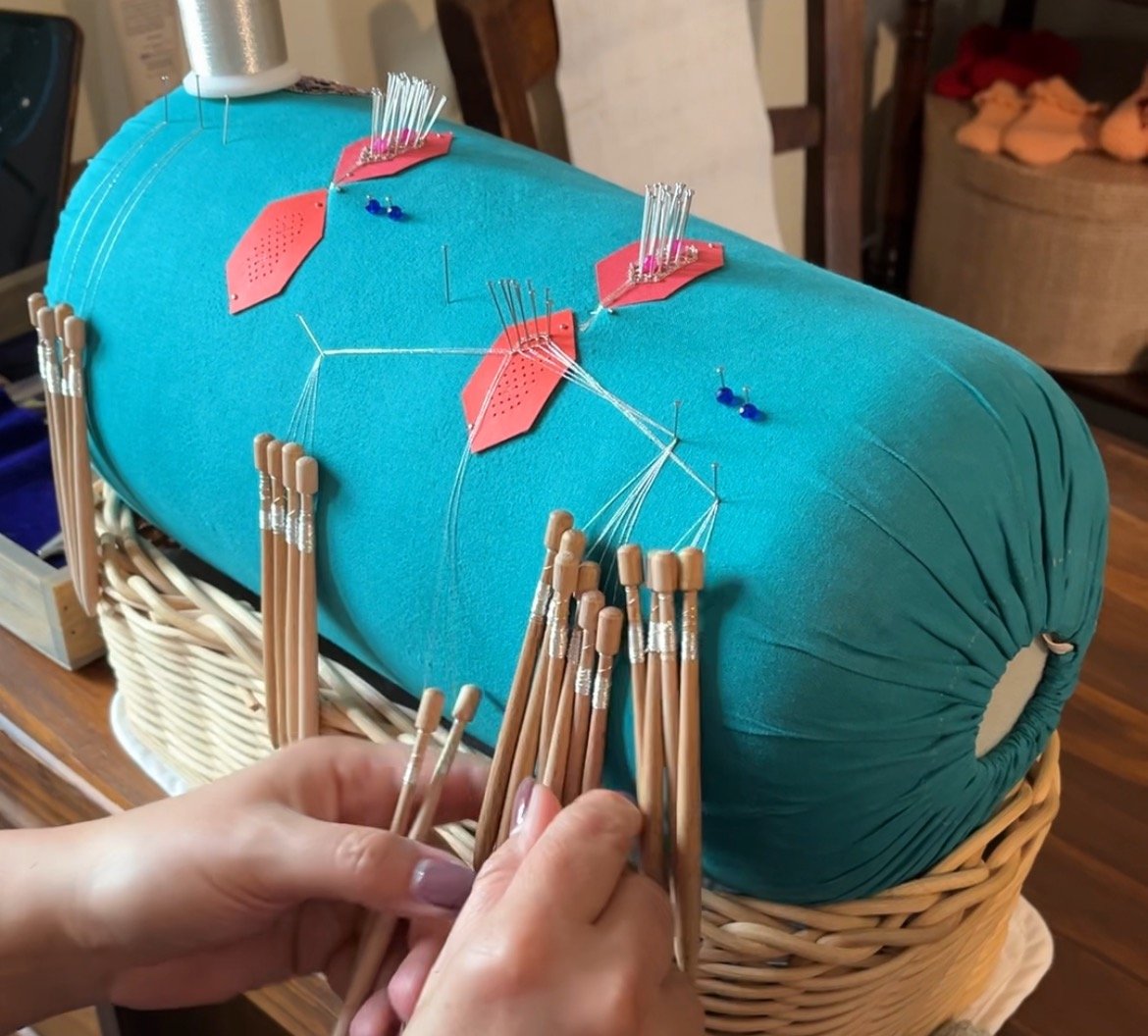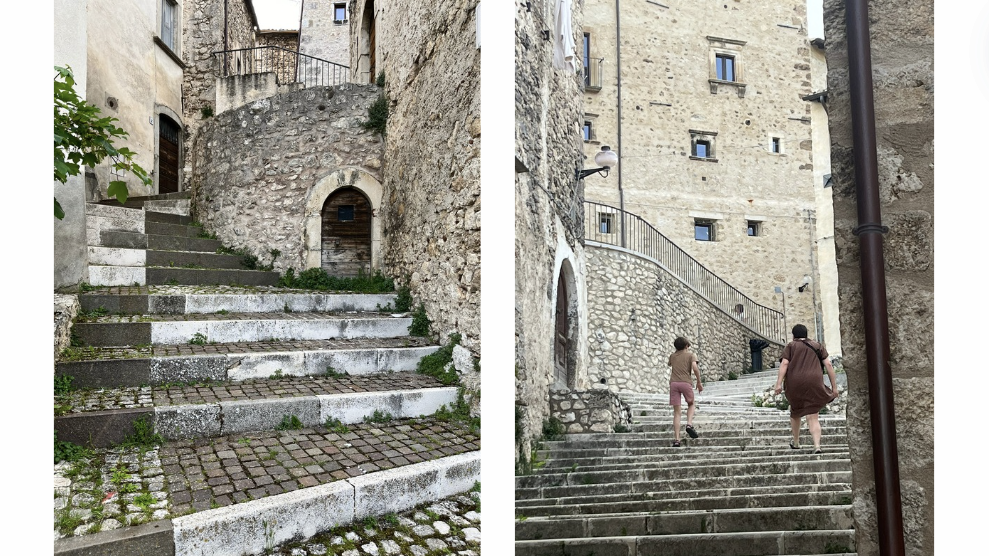Santo Stefano di Sessanio
the history of the city, and the Santarelli Family
The first stop on our genealogical journey was the town of Santo Stefano di Sessanio, a small mountain village about two hours east of Rome. This was the home of the Santarelli’s, my grandmother’s maternal family.
History of the Town
Santo Stefano di Sessanio is a small town in the L’Aquila province of Abruzzo in Southern Italy. It is east (and a little north) of Rome about 2 hours drive, and the town exists within the bounds of the Gran Sasso National Park, the highest point in the Apennine Mountains.
In Santo Stefano looking out at Gran Sasso
The ancient peoples who lived there were shepherds. The earliest evidence is copper found near the lake there as early as 3000 BCE. In Roman times it was an outpost known as Sextantio, likely indicating the distance from the road to Rome. The town as it exists today began as a Medici retreat in the Middle Ages. By the 15th century the area was thriving from the Medici influence, exporting much of their Carfagna wool to Florence where the family was from. The Medici family’s impact on the town is evident everywhere you look, including in the medieval tower which has become a symbol for the city.
Medici Tower
The city continued as a rural powerhouse for centuries selling wool, lentils, Tombolo lace, and other products they grew and made. Following the Unification of Italy in 1861, the city began to struggle as did much of the south. The government raised taxes and imposed new rules on how land was used, making it impossible for shepherds to move with their flocks and decimating the wool industry. As a result the area became poorer, and people had a very difficult time surviving. The appeal of America became too strong for many and most of the people in the town immigrated during the beginning of the 20th century. This is the place the Santarellis and the majority of the town found itself in. During the early 20th c wave of immigration to the United States the majority of the city made the move, leaving only dozens of residents.
Santo Stefano di Sessanio Today
Today there are less than 100 residents of Santo Stefano di Sessanio. The town itself is still thriving as many of the buildings have been restored and turned into the Sextantio Albergo Diffuso, a boutique hotel that extends throughout the village. Santo Stefano di Sessanio is also part of Italy’s Slow Food movement and is famous for their lentils, a unique dark, reddish variety that only grows in that small region are highly sought after.
Lentils at Il Mediceo Ristorante
Since it is used as a resort town, despite the small number of residents, there are a number of restaurants, bars, shops, and little grocery markets to visit. We even went into a jewelry store and the woman there showed us how she makes Tombolo lace jewelry.
Tombolo Lace at I Gioielli di Daulia
Santo Stefano is filled with cats and stairs. Although they were all throughout Italy and Sicily, this town in particular loves cats! My young one counted 25 just in the day and a half we were there. They sleep in flowerpots and on porches and are cared for by the residents and businesses.
There are also a massive amount of stairs. This makes the town incredibly picturesque but is not the best place to come if you have mobility issues. Stairs are so pervasive I’m not sure you could use a wheelchair anywhere in the city. We made it through by moving to the different parking lots that surround the city and then using my crutches to get up and down the stairs. This city was probably the hardest for me physically, which meant I didn’t get to see as much as I would have liked, but the parts I saw were so charming and the people so lovely, I would love to return when I’m stronger.
Family History
When my two times great-grandfather, Giuseppe Santarelli, was born in 1876, Santo Stefano di Sessanio was already experiencing difficulty from the Unification of Italy. He married Nunzia Celestine in 1899 at the age of 23 and had a daughter, Cora, a few years later. Things were difficult in the town and he made the decision at the age of 33 to emigrate in 1909, leaving his wife and daughter behind and heading to Pittsburgh to meet his brother-in-law, Emilio Cicci. The manifest from the ship lists his occupation as a peasant, but when he came to Pennsylvania he began working as a coal miner. Three years later he was able to bring Nunzia and Cora over, and the family was reunited.
One year after they were reunited, my great-grandma Jennie was born in March 1913 just outside of Pittsburgh in Yukon, Pennsylvania. She was followed a year later by her sister Josephine in March 1914, and Pearl in March 1915. Shortly afterward, the family moved a short distance to Ellsworth, Pennsylvania to live and work in the company town for Lackawana Steel Company.
Jennie, Josephine, and Pearl
Unfortunately, difficult times were not behind them. The pandemic of 1918 took both Jennie’s sister Josephine and young brother, Domenico, and finally a few years later, her mother, Nunzia. The blow was difficult for the family. My nonna talks about how her mother, Jennie, went to the neighbor’s house to get her hair braided each morning and the community there that supported them.
Times were difficult in the coal mines, and in 1930 at the age of 17, Jennie and her sister, Cora, followed two brothers and came to Cleveland, Ohio.
Jennie Santarelli with her daughter, Kathy
Photos of Santo Stefano
Santo Stefano at Night
One of the roads at the edge of the city
Taking a break at Nonna Peppina’s market
Flattest piazza we found, where Il Mediceo Ristorante is
Santo Stefano di Sessanio














